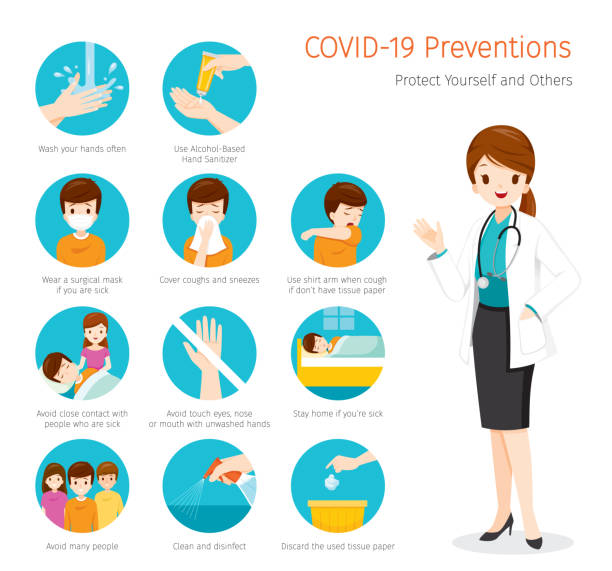
Practitioners and society will benefit from a greater understanding of healthy aging. Many theories and methods have been used in order to define healthy aging. These perspectives have affected the way we approach aging, and how effective care can be provided. These perspectives are not often used in practice. The literature is still lacking representation of older adults. Future research may provide better support for healthy aging.
Practitioners and policymakers are beginning to embrace the concept of healthy ageing. It is becoming more evident that both individual characteristics and the social and physical environment in which we live affect our health as older people. The health of older adults goes beyond medical issues. It includes many psycho-emotional as well as cognitive and spiritual components. Childhood environments can also have an impact on the health of older adults. It is therefore crucial to create more equitable public systems of health for healthy aging.

The three fundamental categories of healthy ageing are: the programs and activities to promote healthy aging, the functional capacity to remain healthy, as well as the social aspects of healthy ageing. Functional ability is the ability of one to meet basic needs, make informed decisions and take care for oneself. The social aspects of healthy aging include opportunities to be socially active, participate in a community, contribute to a community, and receive social support.
The demographic dividend can be defined as an active, healthier older population. In addition, it is defined as reduced health care costs. It is also used to indicate improved family wellbeing. Aging remains a key policy concern for many governments. UNDESA has recently found that over two-thirds have identified population aging in their future policy concerns.
Even though older adults still remain underrepresented, their perspectives are vital to understanding their health. Their perspectives are particularly useful in determining policy and clinical implications. An integrated approach that includes spiritual, social, and psychological components can help improve the health of older adults. Particularly, older adults should learn how they can maintain a healthy lifestyle and be active. It is possible to take a proactive approach when managing your health care.
Healthy aging is also founded on the life-course model, which recognizes that ageing is a process. This approach recognizes that ageing begins at birth, and continues throughout life. It recognizes the importance to youth of their health. It is possible to ensure the health and wellbeing of older adults by ensuring that youth are healthy. You can also minimize the negative effects that aging has on your health. These include eating healthier, exercising, getting enough sleep, and limiting alcohol intake.

Though the idea of healthy ageing is becoming more common among policymakers and practitioners alike, there is still room to improve the implementation. Therefore, it is important that practitioners are surveyed about their experiences and how they were trained. Furthermore, it is important to explore ethnically diverse perspectives. These perspectives can be overlooked in practice, especially if they are not widely recognized by stakeholders.
FAQ
What should I be eating?
Get lots of fruits & vegetables. They provide vitamins and minerals to keep your immune systems strong. Additionally, vegetables and fruits are high fiber. This helps to fill up and aids in digestion. Aim to eat five to six servings of fruit or veg each day.
Get plenty of water. Water helps flush toxins out of your body and makes you feel fuller between meals. Drink about eight glasses each day.
Whole grains are better than refined grains. Whole grains are rich in nutrients such as iron, zinc and magnesium. Refined grains have been stripped of some of their nutrition.
Avoid sugary drinks. Sugary drinks can be a source of empty calories, which can lead to obesity. Choose water, milk or unsweetened tea instead.
Avoid fast food. Fast food is low in nutritional value. It may taste great but it won't give you the energy you need to function properly. Avoid soups, sandwiches and other unhealthy options.
Reduce your alcohol intake. Alcohol is a poor nutrient and has empty calories. Limit the amount of alcohol you consume in a given week to no more than 2 alcoholic beverages.
Red meat consumption should be reduced. Red meats contain high amounts of saturated fat and cholesterol. Opt for lean cuts of beef, pork, lamb, chicken, fish, and turkey instead.
Why does our weight change as we get older?
How do you tell if there are any changes in your bodyweight?
If there are less calories than muscle mass, then weight loss is possible. This means that the daily calories consumed must not exceed the energy used. The most common cause of weight loss is decreased activity levels. Other factors include stress, pregnancy and hormonal imbalances. A person who has more fat than their muscle mass will experience weight gain. It happens when people eat more calories than they use during a given day. There are many reasons for this, including overeating and increased physical activity.
We consume fewer calories that we burn. This is why we lose weight. Exercise regularly increases your metabolism rate, which allows you to burn more calories every day. However, this doesn't mean that we'll necessarily get thinner; what matters is whether or not we're losing fat or gaining muscle. If we are burning more calories than what we eat, then we will lose weight. If we consume more calories that we burn, then we are actually storing them in fat.
As we grow older, we tend to become slower at moving around and therefore we don't move as much. We also tend to eat less food than we did when we were younger. This is why we tend to gain weight. On the flipside, we are more muscular than we really need and appear larger.
Without regularly weighing yourself, it's impossible to determine how much weight has been lost. There are many options for measuring your weight. You can measure your waist, your hips and your thighs. Some prefer to use bathroom weights, others prefer tape measure.
Track your progress by measuring your waistline and weighing yourself every week. You can also take pictures of yourself every few months to see how far you've come.
You can also check your height online to find out how many pounds you have. If you are 5'10" tall, and you weigh 180 lbs, then you would probably weigh 180 lbs.
What's the best diet?
Many factors influence which diet is best for you. These include your gender, age and weight. You also need to consider how much energy you expend during exercise, whether you prefer low-calorie foods, and if you enjoy eating fruits and vegetables.
Intermittent fasting is a good option if you're trying to lose weight. Intermittent fasting involves consuming only specific meals throughout the day, rather than having three large meals. This might be better than traditional diets that have daily calorie counts.
Research suggests that intermittent fasting may increase insulin sensitivity and reduce inflammation. This can result in improved blood sugar levels as well as a lower risk of developing diabetes. Some research also suggests that intermittent fasting might promote fat loss, and improve overall body composition.
How to measure bodyfat?
The best way to measure body fat is with a Body Fat Analyzer. These devices can be used to measure body fat percentages in people who are trying to lose weight.
What can you do if your immune system is weak?
The human body consists of trillions of cells. These cells combine to form organs or tissues that serve specific functions. If one cell dies, a new cell replaces it. Cells also communicate with each other using chemical signals called hormones. Hormones regulate every bodily process, from growth and development to metabolism as well as immunity.
Hormones can be described as chemicals produced by glands in the body. They are messengers that help control how our bodies operate. Some hormones are produced in the body, while others are created outside.
The hormone-producing glands release their contents into bloodstream. This is when hormone production starts. Once hormones are released they move through the bloodstream until reaching their target organ. Sometimes hormones stay active for only a short time. Others hormones are more active and have a longer life expectancy. They can still influence the body's functions long after they have been eliminated from the bloodstream.
Some hormones can only be produced in large quantities. Others are produced in small amounts.
Some hormones are produced at certain times during life. For example, estrogen is made during puberty. Estrogen aids women in developing breasts, maintaining bone density and preventing osteoporosis. It promotes hair growth as well as keeping skin soft and smooth.
Statistics
- According to the 2020 Dietary Guidelines for Americans, a balanced diet high in fruits and vegetables, lean protein, low-fat dairy and whole grains is needed for optimal energy. (mayoclinichealthsystem.org)
- WHO recommends reducing saturated fats to less than 10% of total energy intake; reducing trans-fats to less than 1% of total energy intake; and replacing both saturated fats and trans-fats to unsaturated fats. (who.int)
- Extra virgin olive oil may benefit heart health, as people who consume it have a lower risk for dying from heart attacks and strokes according to some evidence (57Trusted Source (healthline.com)
- The Dietary Guidelines for Americans recommend keeping added sugar intake below 10% of your daily calorie intake, while the World Health Organization recommends slashing added sugars to 5% or less of your daily calories for optimal health (59Trusted (healthline.com)
External Links
How To
How to Live a Healthful Lifestyle
A healthy lifestyle is one that allows you to maintain your weight, your health, and your fitness. It involves living a healthy lifestyle, which includes exercising regularly, eating well, and staying away tobacco, alcohol, and other drugs. A healthy lifestyle will help you feel happy and fit. A healthy lifestyle can help reduce your risk of developing chronic diseases such as heart disease, strokes, diabetes, cancer and osteoporosis.
This project had the main objective of providing a step-by–step guide to living a healthier lifestyle. The introduction of the project was the first. This describes what a healthy lifestyle looks like, why it is important, and who we are. The body paragraphs contain tips on how you can maintain a healthy lifestyle. Finally, I wrote the conclusion. It summarises the entire article and offers additional resources, if needed.
This assignment taught me how I can write concise, clear paragraphs. I also learned how to organize my ideas into topic sentences, and the supporting details. Additionally, I learned how to organize my ideas into topic sentences and supporting details. Lastly, I gained knowledge on how to use proper grammar when writing.